WD Red Pro 6 TB Review - High Performance NAS HDD Gets a Capacity Bump
by Ganesh T S on September 7, 2015 8:00 AM EST- Posted in
- NAS
- Storage
- HDDs
- Western Digital
RAID-5 Benchmarking - Miscellaneous Aspects
Consumers are rightly worried about RAID rebuilds and the scope for drive failures during that process. As one of our evaluation aspects, we randomly yanked out a disk during operation and cleaned it up for rebuild. We recorded the resync duration (time taken to rebuild a 3-disk RAID-5 volume when one of the disks needs to be replaced) as well as the average power consumption during that process. The two aspects, considered together, give an idea of the efficiency of the hard drive. The graph below presents the total energy consumption (Resync Power Consumption (W) X Resync Duration (s)) for the resync.
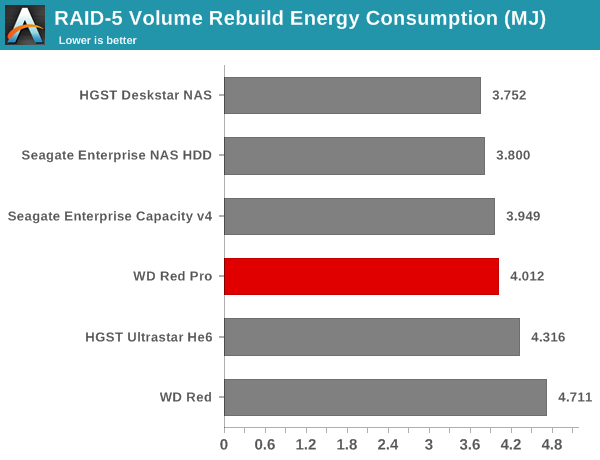
While the energy consumption aspect provides a consolidated view of the various factors, it is still worthwhile to look at the power consumption and resync duration numbers separately. The table below provides the raw information behind the above graph. While the resync duration for the Red Pro is the lowest, the power consumption during the process was also the highest amongst all the evaluated drives. The nett result is that the drive comes in the middle of the pack when it comes to energy efficiency.
| RAID-5 Resync Power Consumption & Duration | ||
| Drive | Power (W) | Duration (s) |
| WD Red Pro | 111.9 | 35850 |
| Seagate Enterprise Capacity v4 | 105.42 | 37462 |
| Seagate Enterprise NAS HDD | 101.91 | 37284 |
| HGST Deskstar NAS | 101.46 | 36981 |
| HGST Ultrastar He6 | 95.36 | 45260 |
| WD Red | 90.48 | 52072 |
We also measured power consumption during the last stage of our multi-client test. With 25 different clients simultaneously stressing the NAS with different types of workloads, we recorded the power consumption at the wall for the NAS as a whole. The various numbers are presented in the graphs below.
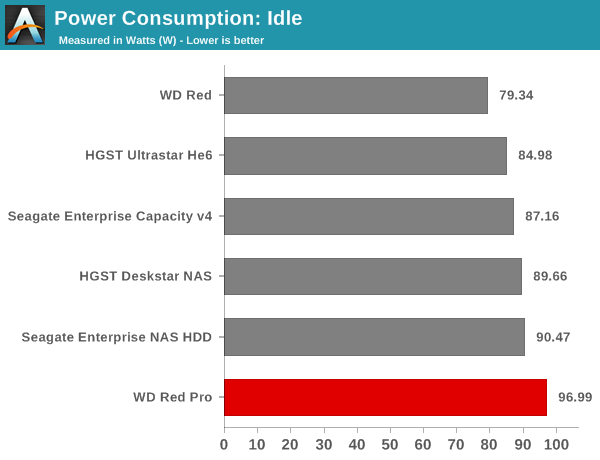
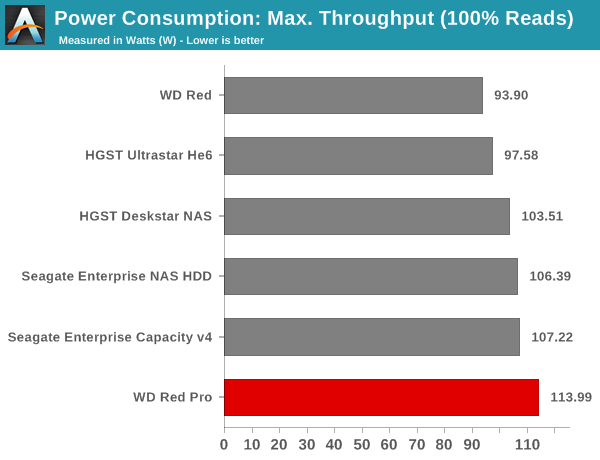
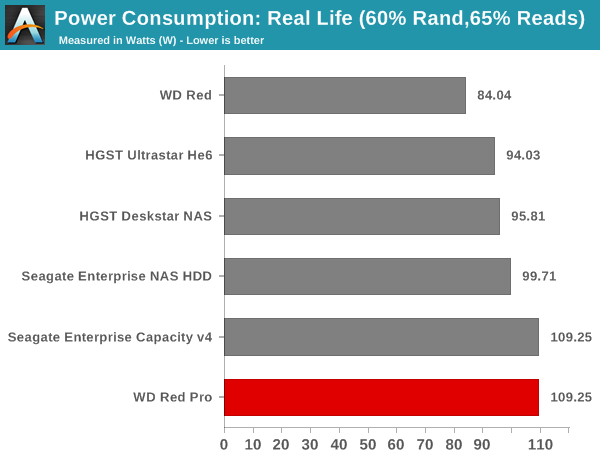
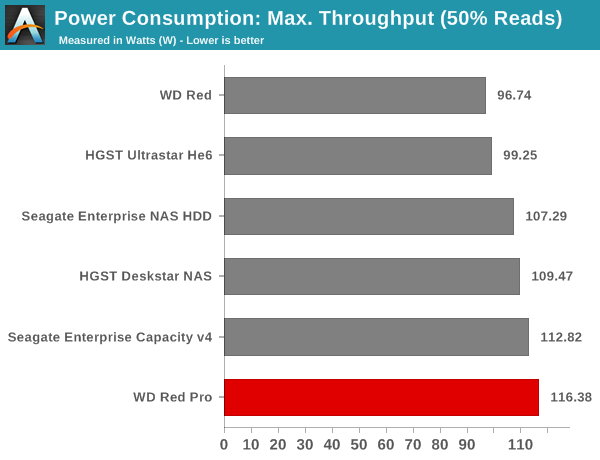
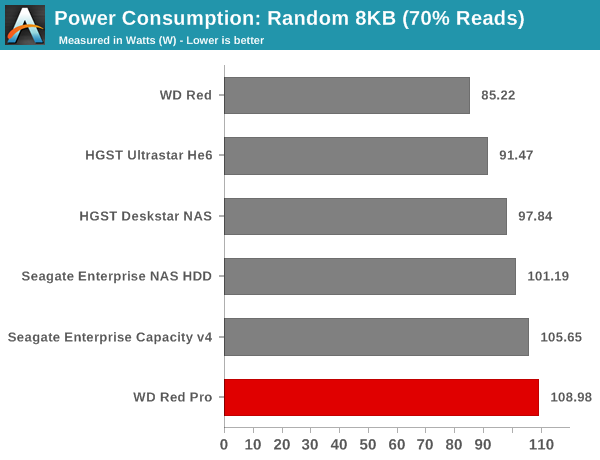
The WD Red Pro is simply not the most power-efficient NAS drive that we have evaluated. Except for the 5400 RPM WD Red, all the other drives that we have in the graphs above are 7200 RPM drives. Despite that fact, the WD Red Pro has the highest average power consumption for all our workloads. However, for a given fixed set of transactions, we expect that the energy efficiency of the WD Red Pro will not be at either extreme (similar to the RAID resync scenario).










62 Comments
View All Comments
Impulses - Tuesday, September 8, 2015 - link
My 75GB 75GXP failed slowly, I dunno if it was related to the main source of failure everyone was seeing... It made for some interesting surprises, like waking up to an empty Desktop because the directory had been mysteriously renamed Desotop (amazingly everything within was intact).MHz Tweaker - Wednesday, September 9, 2015 - link
Yes, I think I remember those GXP-Deathstars "click click clickety click"Samus - Monday, September 7, 2015 - link
I prefer HGST drives, but really just the older ones like the 2TB and 3TB 5400RPM Deskstar Coolspins. They were nearly as fast as most 7200RPM drives of the day.The He6 is just too expensive, although they seem to be very reliable and that was the real concern at the beginning for that technology.
And until recently, Hitachi/HGST didn't have a 6TB non-Helium model available. They are clearly behind Seagate and WD on density, but ahead of them on reliability. Sometimes keeping it old-school is the best path. Look at Mazda with Skyactive. No turbo charging, no fancy dual-clutch or CVT transmissions, just a modern lightweight engine with as much friction removed as possible mated to a tweaked slushbox and it still beats every single competitor in fuel economy, aside from Hybrids, while also being among the few vehicles manufactures that have not had transmission or engine related recalls.
Adul - Tuesday, September 8, 2015 - link
Not to mention taht they are great to drive cards :)Adul - Tuesday, September 8, 2015 - link
Cars! should not reply from phone.yeeeeman - Monday, September 7, 2015 - link
When do these ancient objects go extinct? And why didn't you include at least an ssd for comparison?damianrobertjones - Monday, September 7, 2015 - link
When you and I can afford to buy a 6TB SSD version. That probably means when we're dead.FunBunny2 - Monday, September 7, 2015 - link
I wonder if it's possible to stuff 6TB of NAND, at any node size, into 2.5" form factor?KateH - Monday, September 7, 2015 - link
Yes.http://arstechnica.com/gadgets/2015/08/samsung-unv...
FunBunny2 - Tuesday, September 8, 2015 - link
Zoweeeeee.